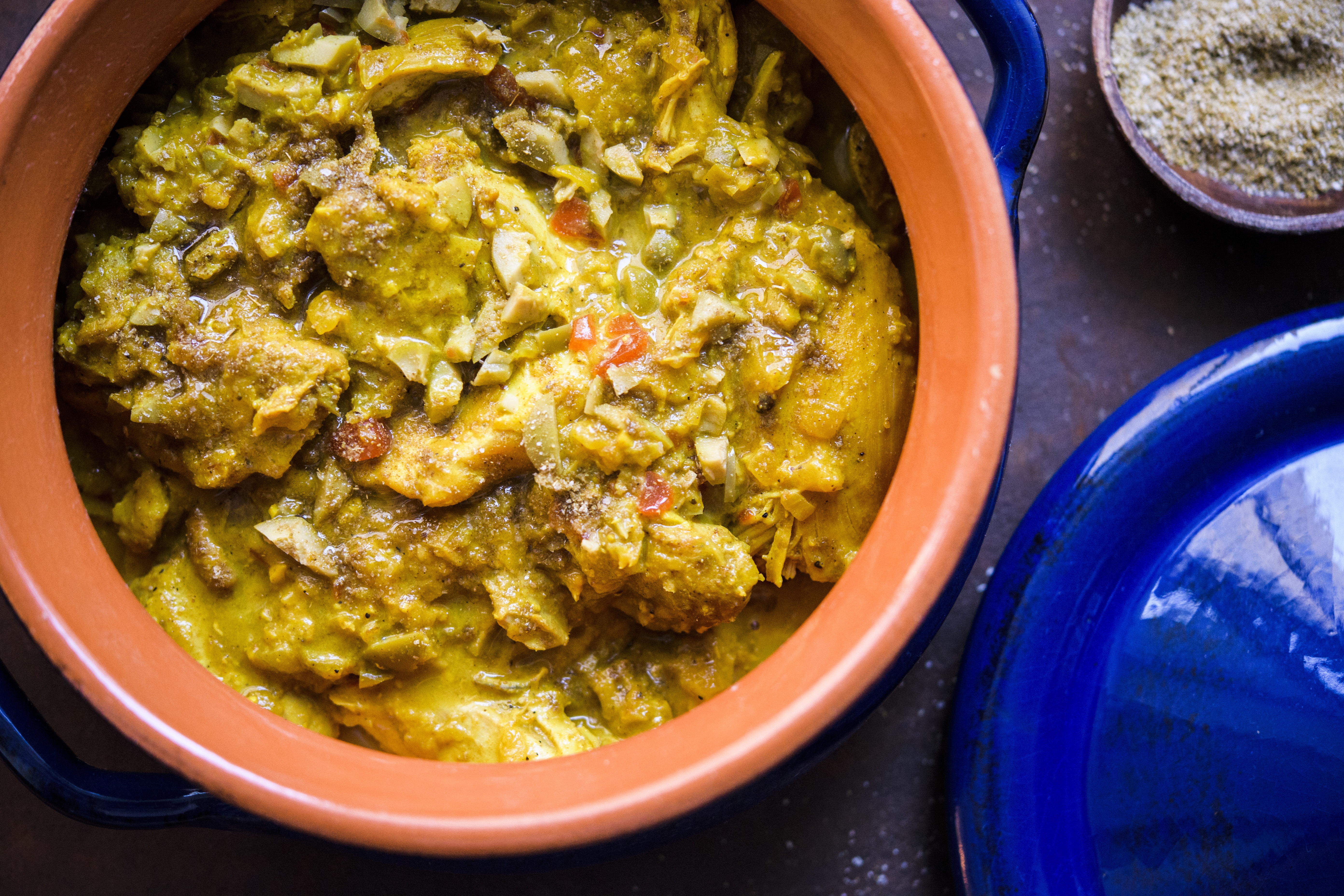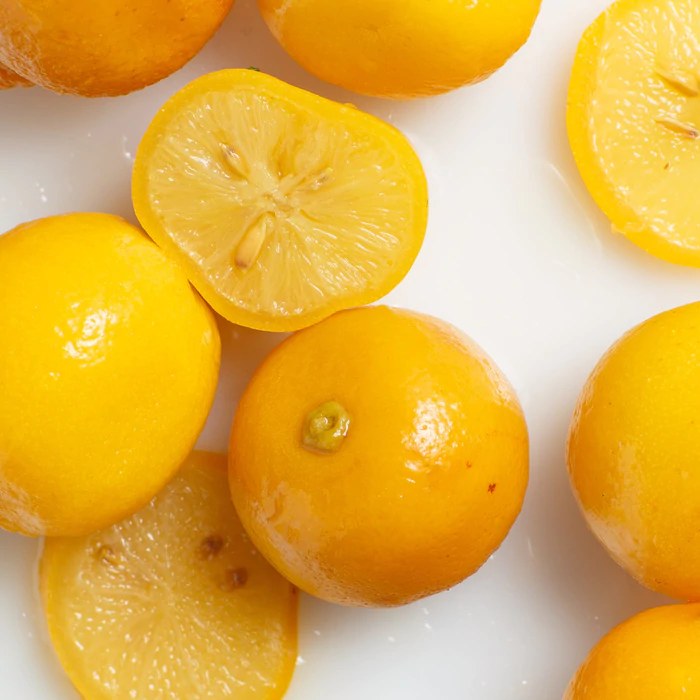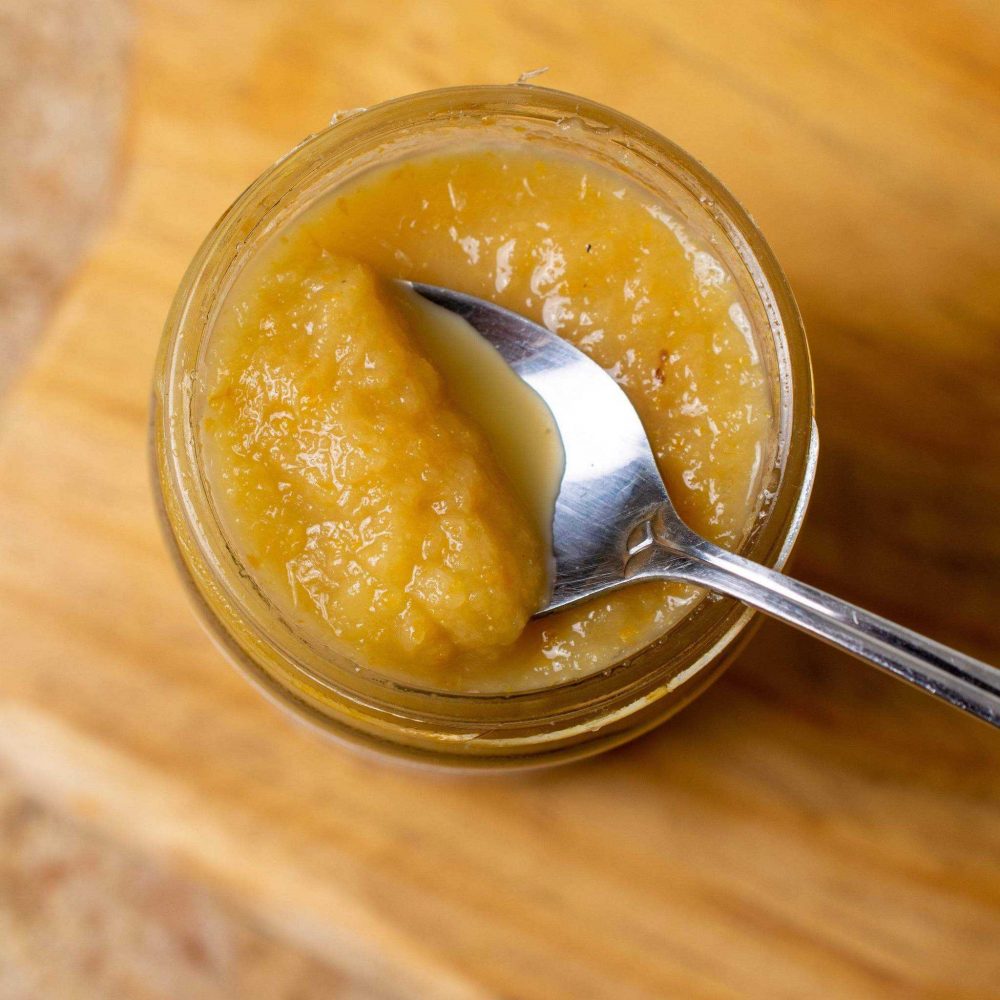Tart, briny and surprisingly complex, preserved lemons are often considered the jewel of the Moroccan pantry. Fistfuls of the tender pulp and skin are added to numerous varieties of tagine, adding a sweet-salty-tart punch that elevates without overpowering. But jars of the preserved fruits are found in market stalls and home kitchens across North Africa and the Middle East, ready to brighten and balance the rich sauces of stews and soups. And this versatile ingredient can do the same for everything from pasta to seafood to vegetable dips.
What Are Preserved Lemons and What Do They Taste Like?
Preserved lemons originated as a practical solution for storing and using the fruit long after the season ended. They are made with fresh whole lemons, sometimes halved or quartered, that are packed in a brine of kosher salt and water or lemon juice—essentially, pickled lemons.
Complex, bright and bursting with umami flavor from natural fermentation, preserved lemons have a more intense, concentrated taste than raw lemons. Brining raw lemons, which typically lasts between a couple weeks and a month, also softens their peel and pith and mellows their bitter and tart flavors. The end result? A versatile soft and lemony condiment that complements a variety of dishes.
Preserved lemon puree is a good substitute for a cutting board-free way to enhance dishes with their fruity funk. Like lemon zest—only with bolder flavor—this jammy-smooth puree has a slightly fruitier aroma and a less salty flavor than whole preserved lemons, with a texture similar to that of grated ginger—plus a liquidy halo of fragrant juice surrounding every dollop. And unlike a squeeze of regular lemon juice or a dusting of zest, this unique product yields a creamier, softer character thanks to the lactic acid that results from fermentation.
How Do You Use Preserved Lemons?
Preserved lemons have two main components: the pulp and the peel. If you want to improvise with preserved lemon, remember that the pulp and peel should be used separately. The soft pulp can be mashed and stirred into soups, stews, dressings and sauces. The firmer, stronger-flavored rind should be diced and cooked for a bit in dishes to soften its texture and disperse its flavor—or minced very fine to not be overpowering. Also, while we don’t recommend pureeing an entire container of preserved lemons to add into dishes—because you can’t separate out the rind and pulp, which are two different ingredients—we love the puree as a silky substitute for lemon zest.
Note: If you want to improvise with preserved lemon, remember that the pulp and peel should be used separately. The salty pulp is best minced to a paste and melted into long-cooked dishes, while the more mild peel is quite toothsome—using both while still bound together would yield an odd texture and perhaps too briny of a flavor
Preserved Lemon Recipes
- Make Zesty Dips Vegetables, Meats and Fish: Make a quick yogurt dipping sauce following this simple recipe. Blend 1 tablespoon of minced peel and 1 tablespoon of preserved lemon pulp per 1 cup of Greek yogurt. Season with salt, pepper, cayenne pepper, and a splash of extra-virgin olive oil. Stir in 2 tablespoons of chopped parsley, cilantro, oregano or dill. The sauce will taste good with vegetables, fish or chicken.
- Upgrade Your Salads: A spoonful or two of the mashed pulp of the fruit (or preserved lemon puree if that’s what’s in your pantry) will go a long way to adding tangy, savory depth to a basic lemon vinaigrette. In a small jar with a tight-fitting lid, combine ⅔ cup of extra-virgin olive oil, 1½ teaspoons toasted and crushed aniseed and a judicious crack of black pepper and sprinkle of kosher salt. Add ¼ cup lemon juice and a dollop of preserved lemon pulp—omitting some of the juice if you’d like. Seal the jar, then shake vigorously. The tender rind also can be minced finely and tossed with your greens as a topping.
- Add To Side Sauces and Tapenades: For a quick relish for meats, fish or roasted vegetables, mince 2 teaspoons of pulp to blend with ½ cup of rinsed-and-chopped green and black olives and ¼ cup of chopped parsley. It’s equally good slathered thickly on the inside of a fried egg sandwich or added to an omelet with crumbled feta or a dollop of creamy ricotta.
- Brighten Rich, Savory Stews and Braises: Preserved lemon traditionally is used to sharpen the spices and offset the unctuousness of rich Moroccan dishes like tagine. We love using them in our Moroccan Meatball Tagine with Green Olives and Lemon with a side of flatbread to soak up the flavorful sauce, but it’s lovely in beef stews, bean stews and any hearty dish that could benefit from some zingy citrus. The rind can also be used in other classic Middle Eastern dishes like Chicken Tagine with Apricots, Butternut Squash and Spinach or Lemon-Saffron Chicken (Tangia). For both of these recipes, add 1 to 2 tablespoons of minced peel 10 minutes before the dish is done.
- Give Pastas Bright, Funky Flavor: Preserved lemons bring a more complex tang than their un-fermented counterparts to starchy pasta dishes. To transform a simple sauce of butter, garlic and white wine—loosened with a splash of pasta water and tossed with al dente noodles—try adding 2-3 tablespoons of chopped preserved lemon rind at the end, off the heat. Top with black pepper and a handful of nutty Parmesan and you have a winning dinner.
- Create a Compound Butter: For an all-purpose butter mix, blend 1 teaspoon of finely minced peel with 4 tablespoons of softened butter. Melt over fish, chicken, blanched greens, rice or pasta—there’s little the combo doesn’t match.
- Fold Into Beans and Grains: Preserved lemon’s piquancy helps cut through starchy grains. Chop up and fold a spoonful into bulgur or couscous. Try adding 1 tablespoon of chopped peel to our Herb-and-Pistachio Couscous, instead of the recipe’s minced jalapeño peppers.
- Make a Balanced Glaze for Baked Goods: Despite their savory saltiness, preserved lemons are right at home in sweets and treats—especially as a silky puree. You can blend the whole fruits yourself in a food processor, but we’re also partial to the juicy Casablanca Market Preserved Lemon Puree. Try using it in a lemon glaze with powdered sugar—the saltiness will cut the sugar and balance the sweetness of any dessert it’s drizzled on. Using fresh lemon juice, thin one tablespoon of preserved lemon puree to a pourable consistency and mix with powdered sugar.
- Replace Lemon Zest in Baked Goods: Acting as a foil to sugar in cakes and other baked goods, the complexity and subtle brininess of preserved lemons provides an extra depth and oomph that can’t quite be replicated by the fresh fruit rind. Try preserved lemon puree as a replacement for lemon zest in a lemon buttermilk pound cake—just remember to add small amounts of this potent ingredient so as to not overwhelm the dessert.

Where To Buy Preserved Lemons
You can most likely find preserved lemons in Middle Eastern grocery stores. Jars of preserved lemons can keep for months in the refrigerator and may develop a deeper pickled flavor and softer texture over time.
However, if you don’t have a Middle Eastern market in proximity, you can also purchase preserved lemons online, including at the Milk Street Store. We carry two preserved lemon varieties: Casablanca Market and Villa Jerada.
We love the preserved lemons from Casablanca Market for their brightness and balance. Here at Milk Street, our taste-testing aficionados tried many brands and found most are overly salty and bitter, whereas these are well-rounded and complex. These are prepared from small, aromatic Beldi lemons grown in Taroudant, a town in southern Morocco, by a women-run enterprise. (Eighty percent of Casablanca Market’s Moroccan and Tunisian imports are by community-based women-owned businesses.) Each jar contains 3 to 4 whole lemons, plenty to enhance numerous meals. (Or try their ready-to-use preserved lemon puree.)
Villa Jerada preserved lemons are another Milk Street favorite. Simply made with salt, time and Beldi lemons, Villa Jerada's preserved lemons are a thin-skinned variety with less bitter pith. With bright citrus, umami depth and light saltiness, these lemons add a flavorful punch to braises, tagines and dressings. They are packed whole but are tender enough to slice easily and use in a variety of dishes. Besides their complex flavor, we also love them for their long shelf stability.

How to Make Preserved Lemons
If you’re not in a time crunch, then making preserved lemons at home is also an option. You can use Meyer or Eureka lemons. Eureka lemons are the most commonly available lemons in the grocery store, and we recommend using an organic variety as you will be pickling the fruit whole. The number of lemons you need will depend on the size as well as how much juice they yield. The recipe below makes roughly 1 quart.- 4-8 lemons plus more for juicing
- ½ cup kosher salt, more if needed
- ¾ cup freshly squeezed lemon juice
- Sterilized quart canning jar (glass is best)
- Determine if your lemons will fit whole through the mouth of your jar. If so, hold each lemon lengthwise and slice into quarters without slicing through the end. You want to leave about 1/4“ of lemon intact so that the lemon opens like a flower. If your lemons will not fit whole through the mouth of your jar, quarter or halve lemons lengthwise.
If using cut, whole lemons: Generously sprinkle about 2 teaspoons salt into the center of each lemon. Pack the whole lemons in the jar, pushing them down hard so that juice is extracted and the lemon juice rises to the top of the jar. Fill up the jar with lemons, making sure the top is covered with lemon juice. Add more fresh-squeezed lemon juice if necessary. Top with 1-2 more tablespoons of salt.
If using lemon pieces: Place into jar in layers and sprinkle 2 teaspoons of salt between each layer. Using a wooden spoon, push down on each layer to release juice. You will need to add fresh lemon juice at the end so that the lemon pieces are covered in juice. Top with 1-2 more tablespoons of salt.
Seal the jar and let sit at room temperature for one week, shaking gently every day or so. Place jar in refrigerator and let sit, again shaking gently occasionally, for at least 3 weeks, until lemon rinds soften. Store in refrigerator for up to 1 year.
Join the conversation on Facebook, Twitter, Instagram and Pinterest
And if you're looking for more Milk Street, check out our livestream cooking classes with our favorite chefs, home cooks and friends for global recipes, cooking methods and more.







